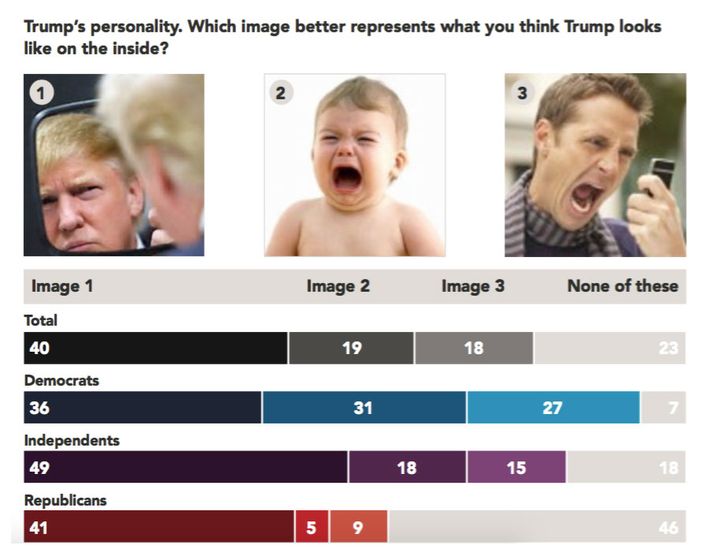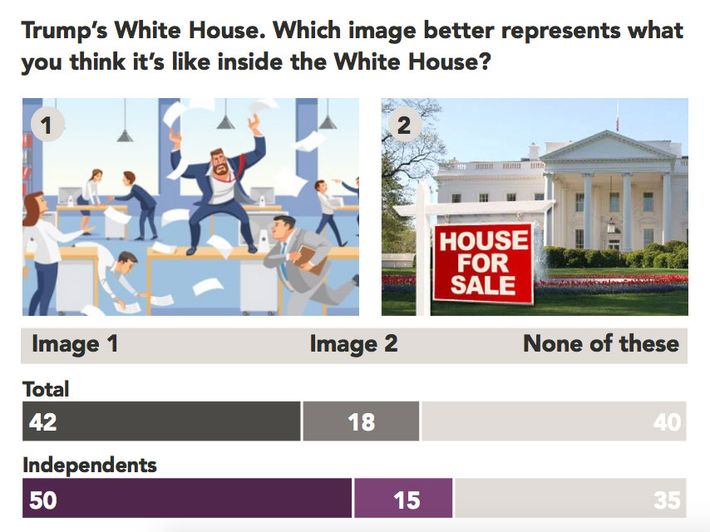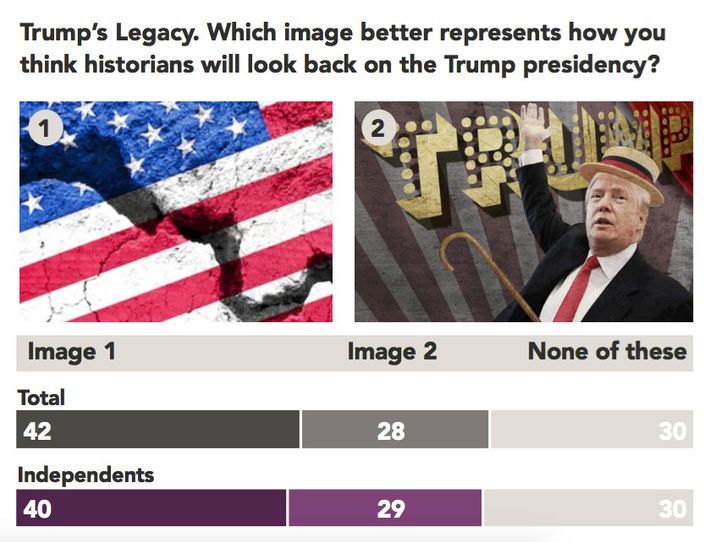
The warning has been inescapable to the point of being exhausting over the first 18 months of the Donald Trump era. Democrats have been told that they simply must come up with a positive message that’s not just anti-White House; if they fail to do so, the midterms — and then 2020 — will surely bring years of unrelenting doom to the left. The party’s taken the basic message to heart: It’s now hard to find a candidate out there campaigning on anything other than bread-and-butter issues like health care, immigration, and economic opportunity. Some avoid mentioning Trump altogether.
But by placing an unrelenting focus on that affirmative vision, Democrats have mostly turned away from figuring out how, exactly, they should be talking about the president, when they have to. It’s a question they never fully answered in 2016: Should the national party try painting him as irresponsible and rash? Perhaps hyperconservative and severe? Maybe immature to the point of corruption?
Enter a group of leading Democratic operatives, who on Wednesday are set to offer a new framework for understanding how Americans view and discuss the president — who, after all, is the whole reason the midterms are shaping up to be so competitive to begin with. Figuring that we’re stuck in an image-first media environment driven by a similarly flash-focused president, Navigator Research, a coalition of top party pollsters and strategists from across the left, tested a set of images rather than words or phrases to gauge how Americans view the commander-in-chief.
Their primary finding, according to a copy of the report viewed early by New York: More than anything else, Americans view Trump as a narcissist in it for himself over the country, and they believe his attitude is sowing chaos and tearing the country apart. It’s far from a silver bullet anti-Trump message, but understanding that this underpinning sentiment is the most popular one among voters could prove an important first step toward building a coherent anti-Trump line for the party.
When asked to pick an image that best describes Trump’s personality, roughly four in ten participants in Navigator’s survey chose a picture of Trump looking at himself in a mirror, compared to just around one in five who chose either a crying toddler or a man yelling at a phone:

The numbers are closer among Democrats: 36 percent chose the mirror photo compared to 31 who opted for the toddler. But among independents, there was an overwhelming break toward the mirror. Roughly half pointed to Trump as self-absorbed. In follow-up questions, 58 percent said they believe Trump wants what’s best for himself over the country, and the same proportion believes he looks down on people like them.
When asked about their view of the White House, the respondents veered away from institutionalized corruption, and instead toward disorder: a sketch of papers flying all over an office that appears to be entirely askew beat an image of a “HOUSE FOR SALE” sign in front of the building, by a 42-to-18 percent margin:

And, when asked how historians will look back on Trump’s time in office, they largely favored a rendering of an American flag with a crack down the middle over a photo of Trump posing like a circus ringmaster:

The findings are set to land at a strategically delicate time: just as campaigns prepare for Americans to turn their attention toward the midterms later this summer, and as a handful of potential 2020 contenders make their presence felt on the campaign trail, where they’ll be able to test their messages with down-ballot candidates. Trump, for one, has already been just as active as many leading Democrats in trying to set the playing field. Navigator — a collaboration between a wide range of Democratic officials who work for labor unions, think tanks, and super-PACs, among other groups — has already released two other reports in recent months aiming to give the party messaging guidance while the cable-pundit class is consumed with the idea that Democrats’ lack of a single slogan spells electoral death.
Yet this latest set of findings also comes while Democratic operatives look back at what went wrong with Hillary Clinton’s anti-Trump messaging. Whereas the Democratic nominee focused on his temperament for much of the general election, party campaigners are now desperate to sharpen that blunt argument as much as possible, and as early as possible before 2020.
But Wednesday’s set of findings also pushes back on the notion that it’s somehow destructive for Democrats to — on occasion — focus on a historically unpopular president. When asked to pick an image that best describes the Trump administration’s policy goals, Americans picked a photo of Barack Obama that appears to be getting erased over a wide range of other options, including a man standing on a pile of gold coins, a handshake between Trump and Vladimir Putin, people behind bars, and an explosion.
In other words, it’s hardly just Democrats who have a messaging problem.
“It serves as a rebuttal of the notion that Democrats are the party that lacks a positive message,” the report reads, echoing a growing frustration on the left. “Democrats would no doubt be helped by communicating a clearer vision, but shouldn’t be afraid to put forth a similar and clearly credible critique of today’s GOP.”






























